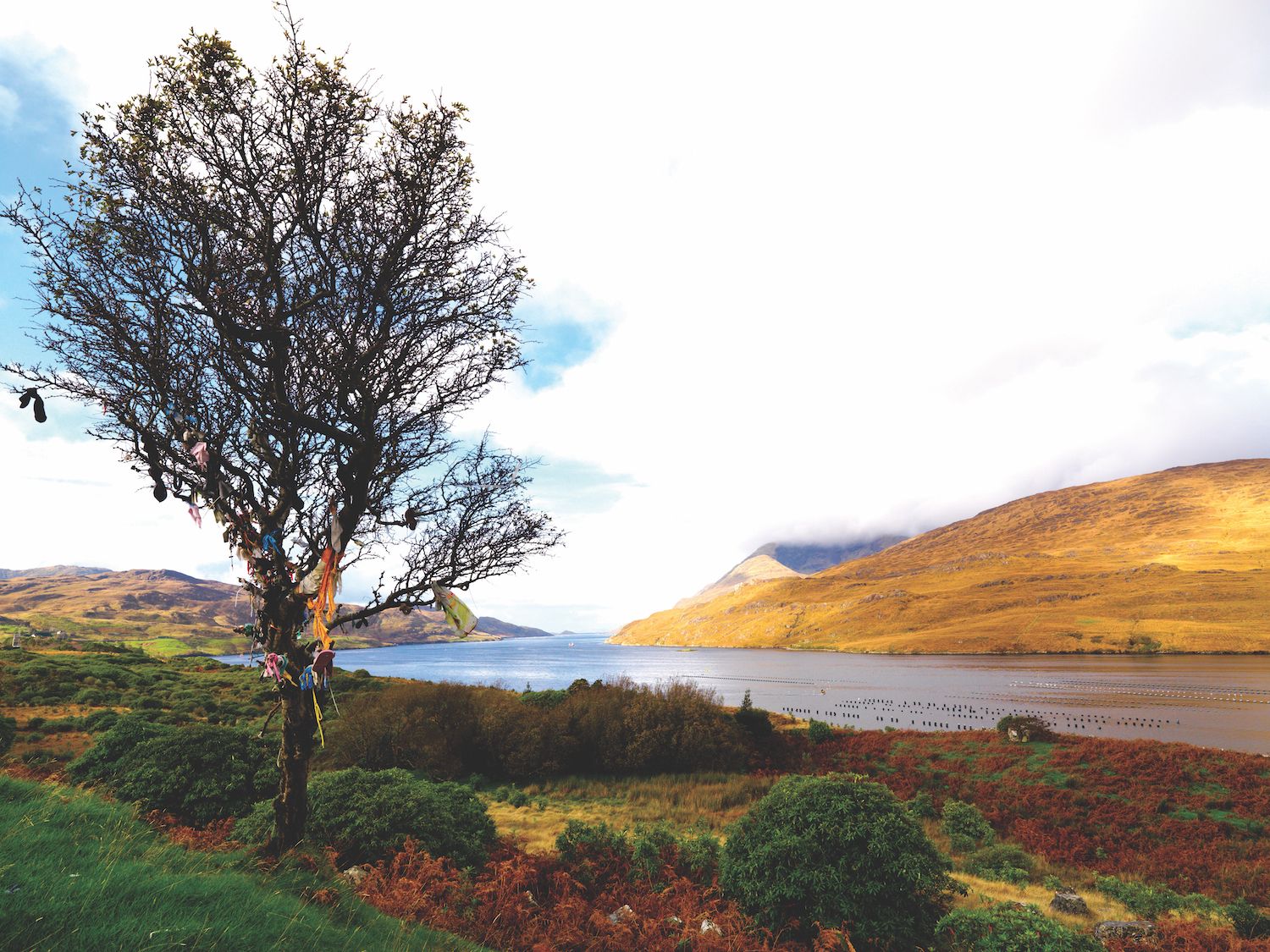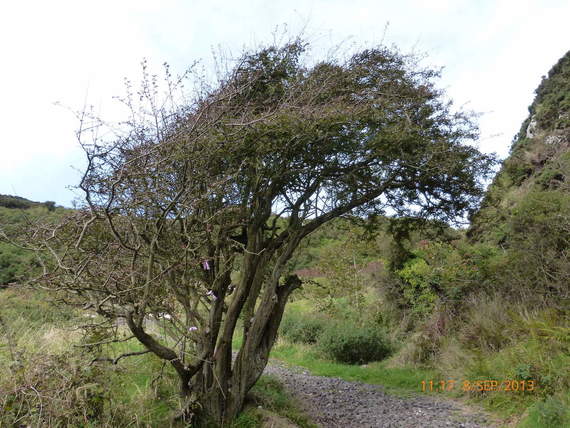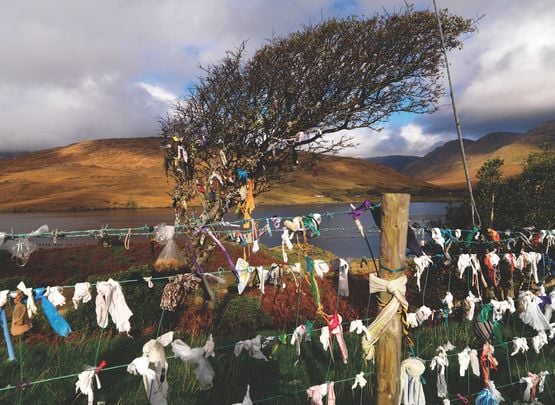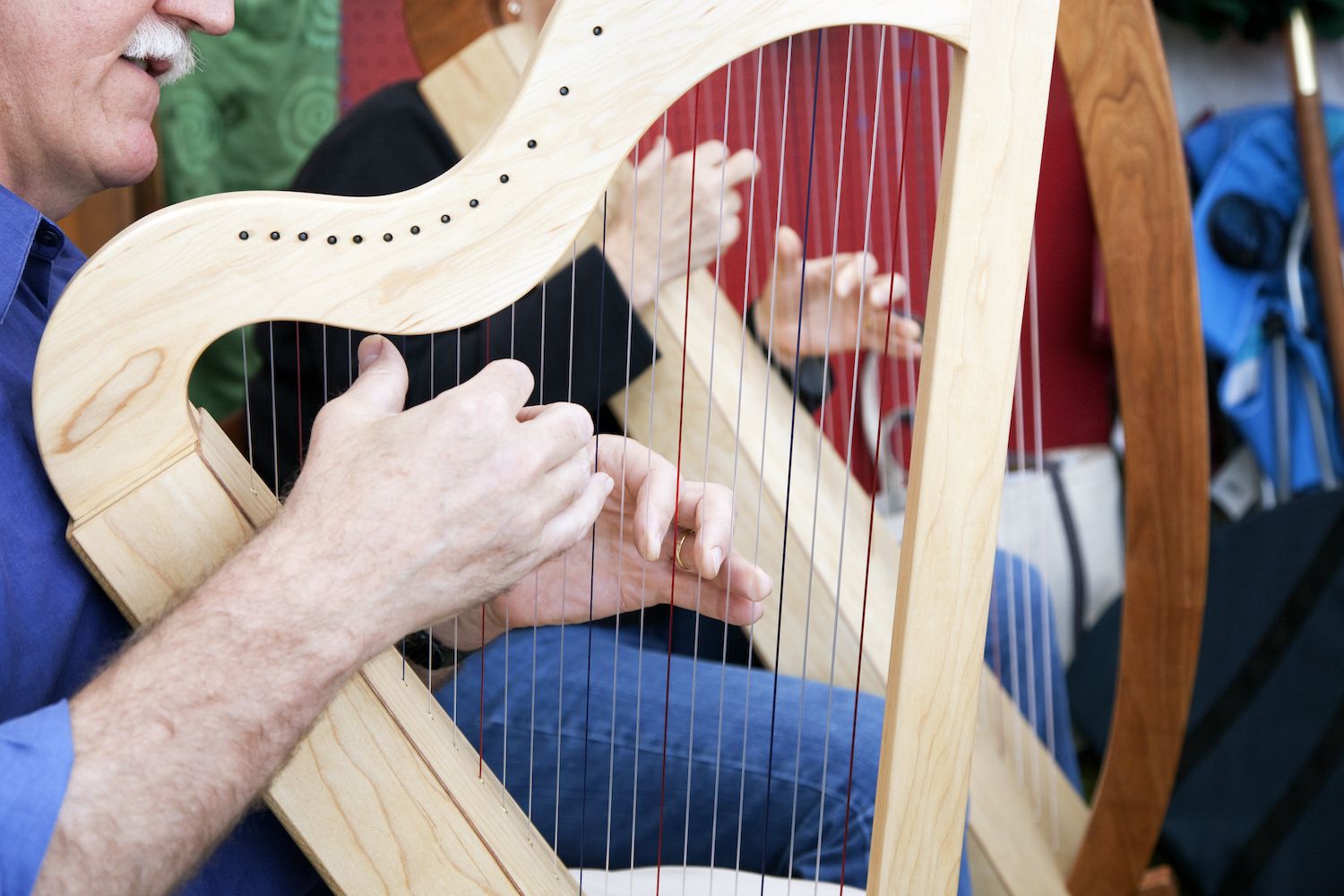Myth and lore have surrounded the sacred hawthorn tree since ancient times, and respect for its supernatural associations is still strong in modern Ireland, writes Deanna O’Connor.
In 1999, work was underway on a motorway bypass in County Clare when, all of a sudden, the plans were changed to accommodate a tree that stood in the path. While every tree is precious, this was not just any tree— it was a sacred fairy tree. At least, that was the opinion of Eddie Lenihan, one of Ireland’s best-known folklorists, who campaigned for the roadworks to be rerouted to save the hawthorn tree, lest it be damaged and incur the wrath and curses of the fairy folk.
According to Lenihan, the tree was on a fairy path and marked a rendezvous point for fairies hailing from Co Kerry on their way to do battle with the fairies in the province of Connacht. Here, they would regroup and plan their battle tactics. He maintained that if the tree were destroyed, the area where it was situated would be sure to experience an unusually high number of road accidents and fatalities.
It may sound like a tall tale to some, but around these parts, we don’t dare to disrespect the fairies—there are countless tales of works that have disturbed or destroyed fairy trees or ring forts with all manner of disastrous consequences. The county engineer took it very seriously, redesigning the plans to work around the sacred tree.
Ancient tree
Hawthorn trees have been native in this part of the world for thousands of years—pollen records show that hawthorn was found in Britain as early as 6,000 BC—and appear not just in Celtic folklore, but also in Christianity and ancient Greek myth. In the Bible, the burning bush seen by Moses was said to have been a hawthorn, and the crown of thorns Jesus wore on the Cross was a hawthorn wreath.
Although the thorny tree was often used as a hedge to enclose land, it is also usually found growing as a single tree, particularly near a holy well or sacred place. ‘Sentry thorns’ or ‘fairy trees’ were supposed to guard the holy places, or be inhabited by the ‘sidhe’, the fairy folk.
It was, and still is, considered terrible luck to damage, remove branches from, or cut down a fairy tree.
In County Tyrone in 2009, a hawthorn tree was cut down, and locals reported numerous sightings of a ghost that had been ‘bottled’ beneath it. One told a reporter from the Belfast Telegraph newspaper, “It was a common thing round here. The local priest would have come round, exorcised a plac,e and put the spirit in a bottle. Then a tree would have been planted so that it would never be disturbed, but that tree was cut down recently.”

A Hawthorn fairy tree.
May blossoms
With knotted, fissured bark, the hawthorn tree looks quite dark and mystical until it comes into bloom, when it is filled with dainty white flowers, hiding its thorny twigs. The hardy tree can tolerate the poorest of soils and can grow up to 60 feet high. A single tree’s lifespan can be more than 400 years. Its leaves appear around March, followed by spring flowering, leading to it often being referred to as the May tree and being used in modern-day May Day celebrations, which were initially the pagan festival of Beltane in Ireland.
Later in the Summer, the haws ripen to a deep, shiny red and are a food source for a wide variety of birds (including blackbirds, thrushes, finches, and yellowhammers) as well as squirrels, rabbits, and sometimes deer when other food sources are scarce. Insects thrive in the gnarled fissures of the trunks. The blossoms attract all manner of flies and bees. Dormice also use flowers as a food source.
The young leaves can be eaten raw, and the distinctively nutty flavor gave rise to the nickname ‘bread and cheese tree’. It is thought to have been part of the Neolithic peoples’ diet. As well as this, both the flowers and the haws have long been used in folk medicine, since the time of the druids, as well as in wines and jellies. The hawthorn is said to open the heart, and herbal infusions were used for heart problems and improving circulation. They are also used as a diuretic in Chinese medicine.
Symbolism
In myth and lore, the hawthorn is associated with contradictory tales, depending on the time and place. In Ireland, the hawthorn is bad luck, and to bring a hawthorn into a house is said to invite illness and death, except that in Celtic mythology it symbolizes love and protection, and brides could collect the blossoms to wear in their hair or bouquet. In Britain, the hawthorn is associated with love, springtime, and May Day celebrations. In ancient Roman and Greek times, the hawthorn was a sign of chastity and purity, and parts of the plant were used as a talisman to protect virginity. Brides wore hawthorn crowns, but marrying during the month of May, when it is in bloom, was thought to be unlucky and confused by its contradictory meanings. The fairies, with their reputation as tricksters, will most likely be pleased if you are; they relish causing confusion and mayhem among us humans.

A fairy tree at Gobbins, County Antrim.
At holy wells, you may often find a hawthorn with rags or offerings tied to it. Modern Wiccans keep some traditions alive, hanging ribbons on the tree for wishes—a pink ribbon for love, a blue ribbon for protection, a green ribbon for wealth, or a purple ribbon for greater spiritual knowledge.
Sometimes folk beliefs can have a grain of truth hidden in them, and while some superstitions link the hawthorn to death, modern science has found that the flowers produce a chemical compound called trimethylamine, which is also released when animal flesh begins to decay after death, according to Richard Mabey in his book, “Flora Britannica”.
Author, poet, and naturalist, Geoffrey Grigson, writing in the 1950s, posited that, ”The stale, sweet scent from the triethylamine the flowers contain makes them suggestive of sex.” The heady, overpowering scent was surely part of the reason the flowers gained the hawthorn its somewhat feared and scandalous reputation.
When the Ogham alphabet developed in Ireland, the letter associated with the hawthorn, bearing its Gaelic name, hUath, is believed to have meant ‘fear’. Irish folklore records recount many tales of malevolent fairy activity directed towards those who damaged or interfered with a hawthorn tree, and mysterious disappearances of those who wandered too close to where the fairies gathered beneath it at night, and while perhaps its unique scent, reminiscent of the taboo subject of sex, and the feared thoughts of death, may have been the cause of the lore that grew around this sacred tree, its power and reputation have stood the test of time, across many cultures and traditions, respected and feared in equal measure.
* Originally published in March 2023, updated in Dec 2025.




Comments